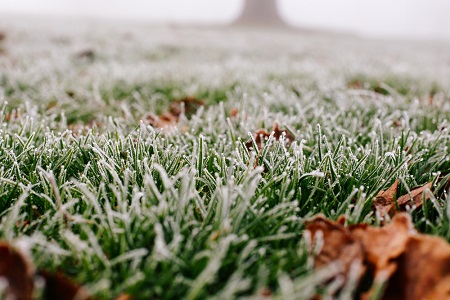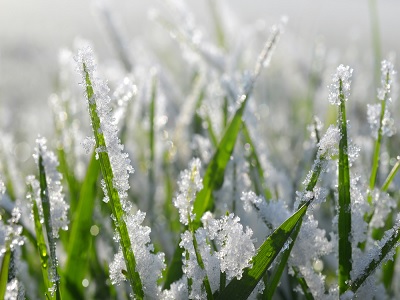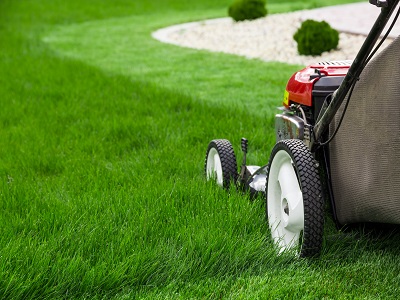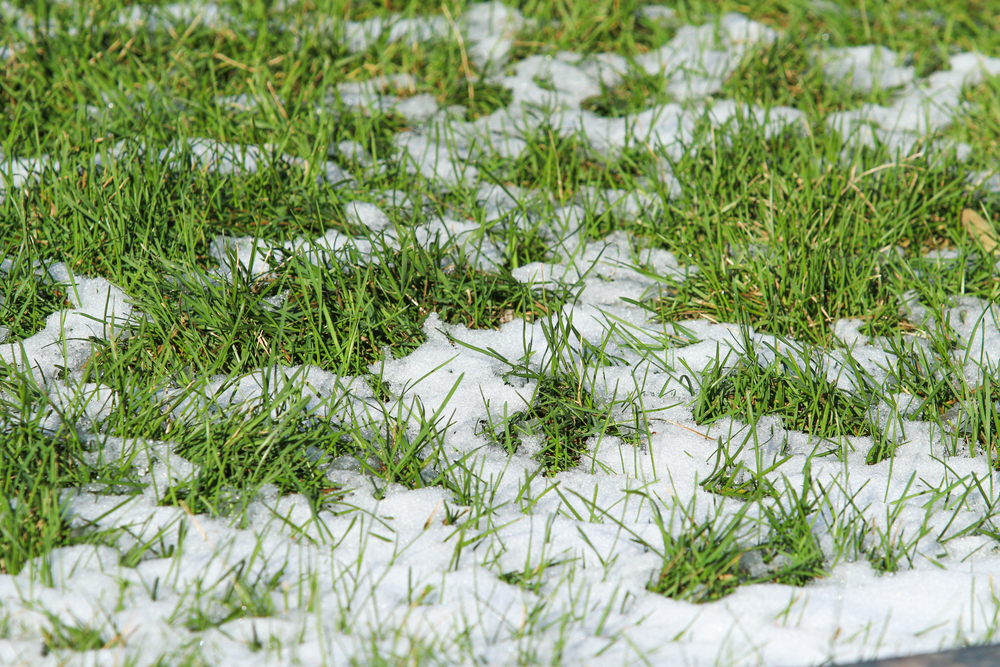
After nine months of lawn care and attention, winter is the time to relax and make sure your grass stays healthy and happy. Winter lawn care is easier and less complicated than spring, summer, and fall. However, it’s important to be aware of what happens to your grass in these months so that you can have a healthy year.
This guide will show you how to maintain your lawn during winter, peak season, and spring. While winter may appear different in every area, your soil and grass will reach their lowest–or dormant-—a growing season when the temperature drops.
Warm-Season vs. Cold-Season Grasses
Winter lawn care is often associated with colder states, where the soil freezes and the grass goes dormant for almost three months. Not all lawns behave the same throughout winter. For example, in the tropical and deep south, grasses that are warm-season can remain lush and green even if temperatures stay steady.
These warmer climates allow warm-season grass growers to follow many of these fall lawn care tips through the cooler months, such as pulling weeds and overseeding with warm-season grasses and keeping an eye out for thatch and compacted dirt. These lawns can be watered up to an inch per week.
Most warm-season grasses become dormant in winter, although some may go dormant as early as late fall. Because they are less resistant to sudden drops in temperature, they are particularly vulnerable. These instructions differ from those for the summer, fall, and spring seasons.
How to prepare for dormancy
It is easy to worry that your grass will die in winter. The grass will survive the winter if it is the right grass for your area.
When the temperature or moisture level of grass drops below a specific level for a prolonged period of time, it goes dormant. The plant can conserve energy and reduce its use during dormancy, which allows it to save energy for next spring. The summer’s rich green color of the summer grass will not be retained by dormant grass. Between the green will be yellow and brown blades.
Winter Care for Early Winter Lawns
The arrival of the first frost will have a significant impact on lawn care during this transitional period. This may arrive in December, but not always in certain areas, particularly those that are located in the transitional zone.
This means that many of your late-fall lawn care tips could spill over into winter, especially if they weren’t taken care of sooner. These first few weeks of winter are a good time to complete a few tasks that feed and support grass before the coldest months.
1. Fertilize One Last Time
The most difficult decision for homeowners is when to apply the final fertilizer layer. This should be done before your grass goes dormant, and after you have finished your last mow.
2. Change your Mowing Schedule
You’ll likely have lowered your mower blades by late fall to cut your grass for winter. You should still leave at least two inches for your grass to root in the spring with stability. However, it doesn’t have to flourish as it did in summer.
You should be aware of when your grass stops growing. It may be hard to notice, as a random frost or snow coating may not cause your grass to stop growing. It is safe to remove your mower once it has stopped growing for the year.
3. Reduce watering
It is not necessary to water your lawn as often in the northern regions, especially during rainy autumns and snowy winters. Reduce your watering frequency if you experience severe drought in the fall to apply half an inch of water every two weeks, instead of an inch every week.
Run a loose rake over your lawn before watering it. This will allow the soil to be broken up and bring more water to the roots.
After draining the hoses and pipes, you can close your sprinkler system for winter if it hasn’t been done. Your hose will not be required until March next year unless there is a significant precipitation drop for several weeks.
Mid-Winter Lawn Care
Your grass can be allowed to rest during winter if it has fully fallen into dormancy. Most grasses can handle cold weather well enough to store energy for the next warmer season. It’s important to allow your lawn to do its thing while you wait.
There are some mid-winter tips you can use to help your lawn stay healthy, especially during heavy snowfall.
1. Reduce Foot Traffic
Your grass will survive the winter freeze. However, it is best to allow it to grow naturally without too much interference. Avoid walking on your lawn in winter to reduce pressure.
You should also avoid placing heavy equipment on your lawn. It will be more difficult for the roots to spread in spring when the ground starts to thaw.
2. Take Care with De-Icers
Even if your lawn is covered with snow, sidewalk salt or other deicing chemicals can cause severe damage to it.
Salt on your walkways and steps can cause problems. The salt then gets onto your grass. This can be avoided in certain circumstances. However, it is important to not spread salt too close to the cement’s end to prevent turf damage.
Although grass can usually bounce back from salt damage in spring, you might notice yellowing or browning around its edges for several weeks.
3. Keep up with the debris
Although there may not be any leaves left on the trees, snow and branches can still be found throughout winter. Clean up your lawn after each defrosts to prevent any displaced stones or branches from reaching your soil.
Late Winter Lawn Care
Now is the best time to start planning for next year’s lawn maintenance plan. Late winter temperatures can be warm enough to bring out the mower, aerator, and hose depending on where you live.
1. Get your Lawn Care Plan in Place
This is a great time to take a step back and look at the areas where your lawn has struggled in the past year. You spent a lot of time trying to fight lawn fungus. Do you need to treat your lawn for pests and weeds? Your next season will be easier if you use a better fertilizer, a seed mix, or lawn tools.
2. Eliminating the Last Snow Piles
During the winter months, snow and ice tend to build up and stick to lawns in certain areas. To melt them faster and more evenly, break up the thicker snow and ice patches and spread them out more evenly.
This protects the grass beneath these heavy snow piles from compaction as well as the risk of fungus if the weather suddenly gets warmer.
3. Do not move too quickly
It can be tempting to rush into lawn care when the last weeks of winter are over and your grass has cleared of any snow. To avoid stressing your grass, give it time to rest and let it go dormant.
It will appear that your grass needs immediate intervention at this point. However, it is just storing the last bits of nutrients until it wakes up when the soil thaws. You should wait for the late winter’s dampness to pass before raking your lawn. This will allow the soil to dry completely.
Avoid mowing, fertilizing, or overseeding your lawn before spring. This is best in most cases.
4. Prepare Your Tools
Spring is a great time to get out your lawn maintenance tools and make sure they are ready for the busy season. You can take your mower to a local landscape specialist for a sharpening, refueling, and all-around tune-up.
Grab your tools and make sure they aren’t rusted or damaged from winter. You can also check to see if you have any other tools that could simplify your life for the next year.
Call Conway Lawn Care Service now if you need help in maintaining your lawn.
Like our Facebook page for more great info about lawn care services.
Conway Lawn Care Service
Conway, SC 29526
843-353-2259
http://conwaylawncareservices.com/




